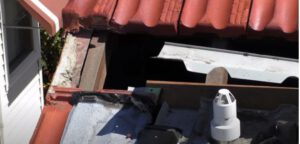 A roof leak can be a major issue for any homeowner, especially if you live in Australia. The harsh weather conditions and the extreme temperatures can cause damage to your roof and lead to leaks. Fortunately, there are several ways to repair a roof leak in your home. In this article, we will discuss some of the most effective methods for fixing a leaking roof.
A roof leak can be a major issue for any homeowner, especially if you live in Australia. The harsh weather conditions and the extreme temperatures can cause damage to your roof and lead to leaks. Fortunately, there are several ways to repair a roof leak in your home. In this article, we will discuss some of the most effective methods for fixing a leaking roof.
Identifying the Source of the Leak
The first step in repairing a roof leak is identifying where it is coming from. This can be done by looking for signs of water damage inside your home such as discolored walls or ceilings, or by inspecting the outside of your home for signs of water damage such as cracked shingles or missing pieces of flashing. If you cannot find any visible signs of water damage, you may need to hire an experienced professional to inspect your roof and identify the source of the leak.
Sometimes, you may need to perform a water test or use an infrared camera to detect the source of the leak. These tests are by roofers who specialize in finding and repairing roof leaks.
Once the source of the leak has been identified, it’s important to take swift action to stop further damage from occurring. This may involve repairing or replacing damaged shingles, flashing, sealing any gaps with caulking or special sealants, replacing rotted boards, and patching up any holes.
Repairing Nail or Screw Holes
Once you have identified where the leak is coming from, it is important to repair any nail or screw holes that may have caused it. This can be done by slipping a piece of roof flashing underneath the shingle and adding a bead of caulk or roof cement to both the top and bottom edges. It is also important to make sure that all nails are properly sealed with caulk or sealant so that they do not become loose over time and cause further leaks.
Fixing Step Flashing
 Step flashing is used around chimneys, skylights, dormers, and other areas where two different planes meet on your roof. If these areas are not properly sealed, they can become vulnerable to leaks over time. To fix step flashing, you should start by removing any old caulking that has been used around these areas and replacing it with new high-quality caulk or sealant. You should then use metal flashing tape along each side of the joint between two planes before applying another layer of caulk over top for additional protection against moisture infiltration.
Step flashing is used around chimneys, skylights, dormers, and other areas where two different planes meet on your roof. If these areas are not properly sealed, they can become vulnerable to leaks over time. To fix step flashing, you should start by removing any old caulking that has been used around these areas and replacing it with new high-quality caulk or sealant. You should then use metal flashing tape along each side of the joint between two planes before applying another layer of caulk over top for additional protection against moisture infiltration.
Patching Your Roof Deck
If there are any large holes in your roof deck caused by hail storms or other types of severe weather conditions, it is important to patch them as soon as possible before they cause further damage to your home’s structure. To patch these holes, you should start by cutting out an appropriately sized piece of plywood that will fit snugly into the hole before securing it with nails or screws along its edges. Once this has been done, you should then apply a layer of tar paper over top followed by another layer of asphalt shingles for additional protection against moisture infiltration.
Replacing Vent Boots or Fasteners
Vent boots and fasteners are used around vents on roofs in order to keep them securely attached while also providing an extra layer of protection against moisture infiltration into your home’s structure. Over time these components may become worn out due to exposure to extreme temperatures and weather conditions which could lead them becoming loose and causing leaks in your roof deck if left unchecked for too long. To replace vent boots or fasteners on your roof, simply remove any old ones that have become worn out before attaching new ones using appropriate fastening materials such as screws or nails depending on what type was originally installed on your roof deck when it was built initially.
Conclusion
Repairing a leaking roof can be difficult but with proper maintenance and regular inspections it doesn’t have to be overwhelming task if caught early enough before causing more serious structural damage inside your home’s walls or ceilings due to prolonged exposure from water infiltration through cracks in its surface area . By following these simple steps outlined above ,you should be able to successfully repair any minor issues with ease while preventing more serious problems from occurring down the road .